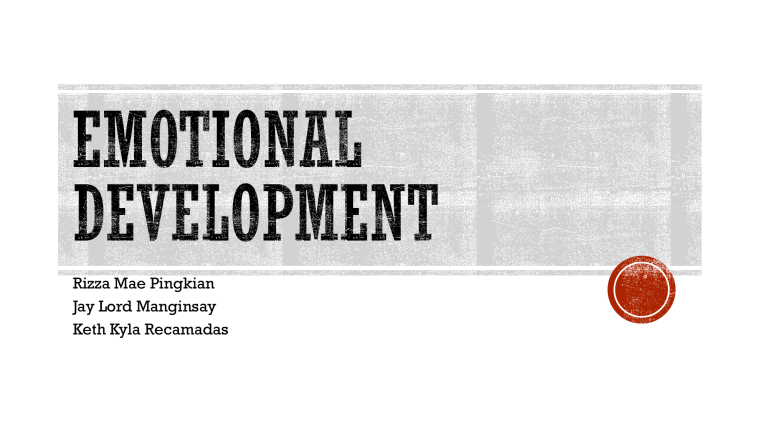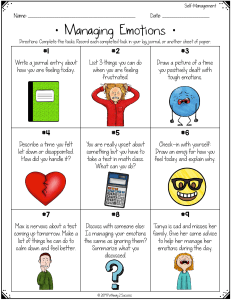
Rizza Mae Pingkian Jay Lord Manginsay Keth Kyla Recamadas Roles of Emotions in Child’s life 1. It adds pleasure to the child’s experiences. 2. It serve as motivation to action. 3. Emotions may also prove to be a handicap to the child also. Unpleasant Emotions – are harmful to the child’s development a. Fear b. Anger c. Jealousy Pleasant Emotions – are helpful and essential to normal development in the childhood years a. Affection b. Happiness c. Joy d. Curiosity 1. Maturation 2. Learning a. Conditioning or learning by association b. Imitation 1. 2. 3. 4. 5. 6. 7. 8. Children’s emotions are brief Children’s emotions are intense Children’s emotions are transitory Children’s emotions appear frequently Children’s emotional response are different Emotions can be detected by symptoms of behavior Changes in strength of emotion Changes in emotional expression 1. Fear – is valuable to a child when not intense and it serves as a warning of danger Pain Threat Danger 2. Worry – is an imagery form of fear - present among older children . - they are the product of child’s imagination rather than the direct response to a stimulus from the child’s environment 3. Anger – is more frequent emotional response than fear - at an early age many children discover that anger is a good way to seek attention or to satisfy their desires 4. Jealousy – is a normal response to actual, supposed, or threatened loss of affection. It is an outgrowth of anger, giving rise to an attitude of resentment directed toward people. The jealous person feels insecure. 5. Joy, Pleasure, Delight – joy which in it’s milder form is known as pleasure, delight, or happiness, is a positive emotion, because the individual is experiencing it makes no attemp to remove the situation giving rise to it. 6. Affection – child’s affection are learned and not innate. The child learns to have affection for those who take care of his bodily needs, who played with him, and who, in general, are responsible for giving him pleasure and satisfaction. 7. Curiosity – curiosity starts after the three months of life. He is interested not only in materials but in people, their behaviors, their manners of dressing and the difference between boys and girls. Fatigue Poor health Time of day Intelligence Social environment Family relationship Level of aspiration







